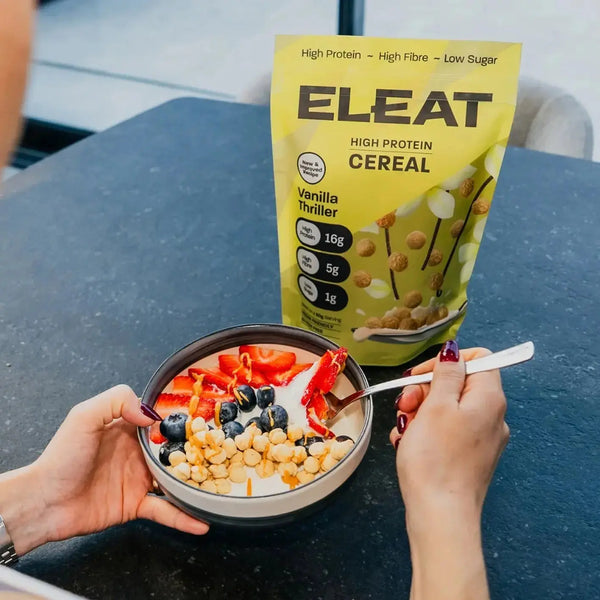In this article:
In recent years, the popularity of gluten free diets has skyrocketed, with more people than ever opting for gluten free products. But what exactly is gluten, and why are so many individuals choosing to avoid it? Gluten is found in wheat, barley, and rye, and for those with celiac disease or gluten sensitivities, consuming it can lead to a host of uncomfortable symptoms. However, the benefits of gluten free foods extend beyond just those with dietary restrictions. Gluten free cereal, in particular, has emerged as a delicious and versatile breakfast option that can cater to a wide audience. In this blog, we'll explore why gluten free cereal is a great choice for everyone, highlighting its health benefits, versatility, and tips for choosing the best options available. Whether you're gluten sensitive or simply looking to mix up your breakfast routine, gluten free cereal might just be the tasty solution you’ve been searching for!
Understanding Gluten Free Cereal
What is Gluten Free Cereal
Gluten free cereal is a breakfast option that is made without any ingredients containing gluten, a protein found in wheat, barley, and rye. This makes it suitable for individuals with celiac disease or gluten sensitivities. Unlike traditional cereals that often rely on these grains as a base, gluten free cereals utilise alternative grains and ingredients, allowing those who avoid gluten to enjoy a nutritious and satisfying breakfast. At ELEAT we use corn flour as a base.
Common Ingredients Used in Gluten Free Cereals
Gluten free cereals can be crafted from a variety of grains and ingredients that provide flavour, texture, and nutritional benefits. Some common alternatives include:
Rice: One of the most popular bases for gluten free cereals, rice can be used in various forms, such as puffed rice or brown rice flour.
Corn: Corn-based cereals are widely available, often in forms like corn flakes or puffed corn, and they provide a naturally sweet flavour.
Oats: While oats are naturally gluten free, they can be contaminated with gluten during processing. Look for certified gluten free oats to ensure safety.
Quinoa: This nutrient-dense grain is high in protein and fiber, making it an excellent choice for gluten free cereal blends.
Sorghum and Millet: Both are ancient grains that add a unique texture and flavor to cereals while being naturally gluten free.
Nuts and Seeds: These ingredients not only contribute crunch but also boost the cereal's nutritional profile with healthy fats, protein, and essential vitamins.
Dried Fruits and Natural Sweeteners: Many gluten free cereals incorporate dried fruits like raisins or cranberries, and sweeteners such as honey or maple syrup to enhance flavour without relying on refined sugars.
By understanding what gluten free cereal is made of, you can make informed choices that align with your dietary preferences while enjoying a wholesome and tasty breakfast.
Health Benefits
Potential Benefits for Those with Gluten Sensitivities or Celiac Disease
For individuals with celiac disease or non-celiac gluten sensitivity, consuming gluten can lead to serious health issues, including digestive problems, fatigue, and long-term damage to the intestines. Gluten free cereal offers a safe breakfast option that allows these individuals to avoid harmful reactions while still enjoying a satisfying meal. By choosing gluten free cereals such as ELEAT, they can nourish their bodies without fear of gluten exposure, making breakfast a stress-free part of their day.
Other Health Benefits
Beyond its suitability for those with gluten sensitivities, gluten free cereal can provide a variety of health benefits that appeal to a broader audience:
Increased Fibre Content: Many gluten free cereals are made from whole grains like oats, quinoa, and brown rice, which are rich in dietary fibre. High fibre intake is associated with numerous health benefits, including improved digestion, better blood sugar control, and a reduced risk of heart disease.
Nutrient Density: Gluten free cereals often incorporate a diverse range of ingredients, including nuts, seeds, and dried fruits, enhancing their nutritional profile. These additions can provide essential vitamins and minerals, such as iron, magnesium, and B vitamins, which are important for overall health and energy levels.
Lower Risk of Processed Ingredients: Many gluten free brands focus on natural ingredients and whole foods, avoiding highly processed additives that can be found in traditional cereals. This emphasis on clean eating can contribute to better overall health and wellness.
Weight Management: The higher fibre content in gluten free cereals can promote satiety, helping individuals feel fuller for longer. This can aid in weight management by reducing the urge to snack excessively throughout the day
Versatile Options for Healthy Eating: With a wide array of gluten free cereals available, including options that are low in sugar and high in protein, it’s easier than ever to find a breakfast that aligns with specific dietary goals, whether that’s weight loss, muscle gain, or maintaining a balanced diet.
In summary, gluten free cereal not only serves as a safe option for those with gluten-related disorders but also offers a wealth of health benefits that make it an appealing choice for anyone looking to enhance their breakfast routine.















